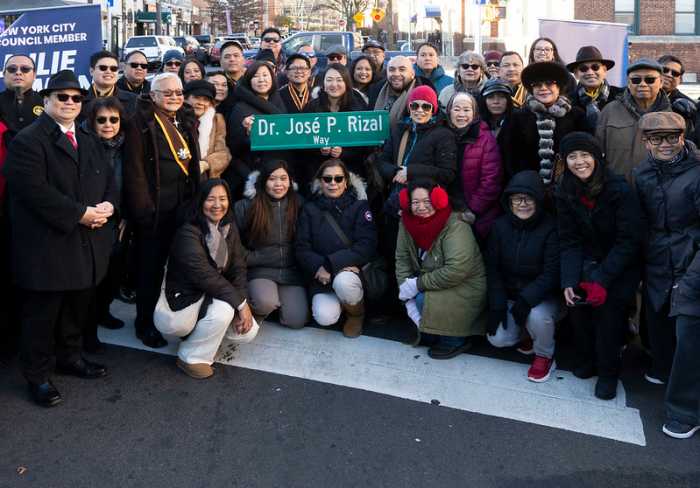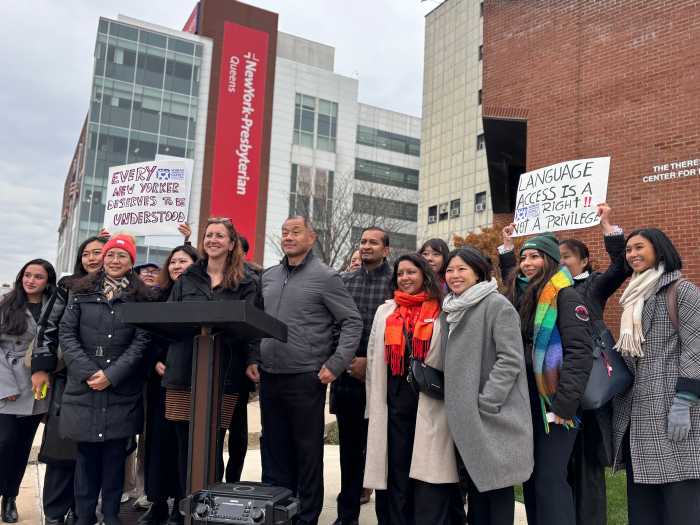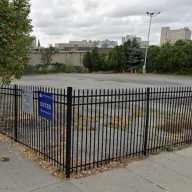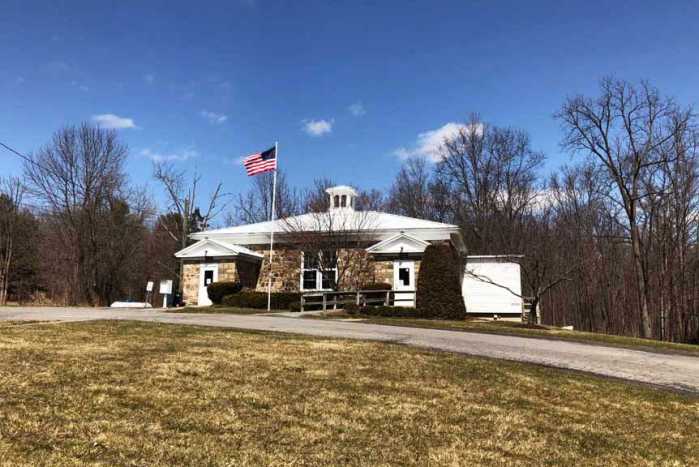Protestors did not let the Monday night’s Sunnyside Yards hearing commence without vocal opposition, as groups expressed distrust toward the Economic Development Corporation’s plan to deck over 180 acres of rail yard.
Among the loudest groups protesting in the cafeteria of the Aviation High School in Sunnyside were Queens Neighborhoods United (QNU), who brought their beef with the EDC back to the conflict of Amazon HQ2, which they referred to as a backroom deal.
And while QNU and other organizations were making a din in the cafeteria, the teacher’s lounge saw members of the public were asking the planning consulting team leader Vishaan Chakrabarti and the EDC’s Adam Grossman Meager what would happen to their community in terms fabric and infrastructure.
“We really believe that if Queens is going to maintain the diversity that it has today … It’s going to need more affordable homes. It’s going to need more access to jobs. It’s going to need better transportation, and more parks, schools and healthcare,” Chakrabarti said. “The city, generally, we’re facing a lot of long-term challenges in terms of climate change, affordability, economic opportunity. We just think it would be foolish to not look at Sunnyside Yards in light of the needs of what both Queens has and the city has.”
While an earlier feasibility study placed the Sunnyside Yards project between $16 billion to $19 billion, the new price tag is marked at $22 billion, which critics say should be spent on existing problems in existing neighborhoods.
“Now is the time to speak out against luxury development and hyper-gentrification in western Queens. Mayor de Blasio and the EDC should not be dumping billions into new luxury developments while NYCHA needs billions for critical maintenance and repairs. We need good, truly affordable housing for all and an end to homelessness. Invest billions to solve these problems, not hyper-gentrify our neighborhoods,” said Patricia Chou, a Queens Neighborhoods United organizer.
Along with the existing transit infrastructure, Chakrabarti said the deck would be equipped with roads wide enough to handle bus service.
“Strained infrastructure, we know that, we’ve heard that from a lot of people, but none the less infrastructure that can be improved upon,” Chakrabarti continued. “The process has really been driven, we feel, by the public. We’ve had many, many meetings and gotten a lot of input. Not just input about specific aspects of the plan but also what the identity of Queens is and we want to be true to that identity in the spirit of this place.”
On the western end of the site, Chakrabarti said there is potential for a long-awaited Sunnyside Station on for LIRR riders, which has federal funding, but has yet to be built by the MTA.
According to Chakrabarti, western Queens is starved of open space which he believes decking over the yard could provide parks for the public. The overall heigh of the deck has been decreased in its highest points, the equivalent of five- to six-story buildings in some places.
Whether or not Sunnysiders would be cast beneath a constant shadow from the deck and the buildings combined was a concern which the EDC said it had taken into account to prevent.
Garbage and other services would be handled within the “thickness of the structural deck,” Chakrabarti said.
A 45-year resident of Sunnyside said her neighborhood is diminishing without the development as it is and posed the question to Meager of how it is expected to effect communities.
“We would want this to be a world where Sunnyside is still very much Sunnyside, and strengthened [by the development],” Meager said.
The Sunnyside Yards project is expected to cover a space seven times the size as Hudson Yards, which has attracted its share of criticism since its completion such as the unaffordability of the housing, the cost of the project and the return on investment for the city.


































